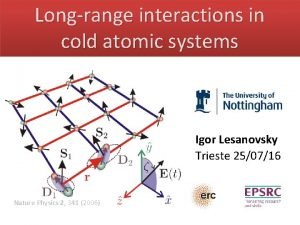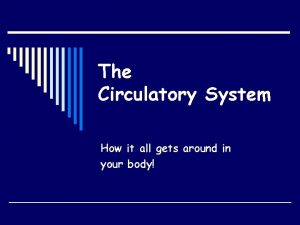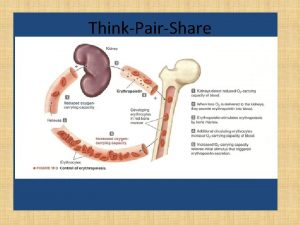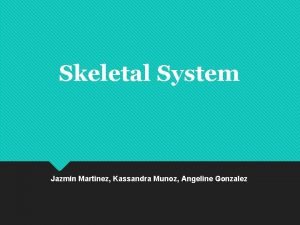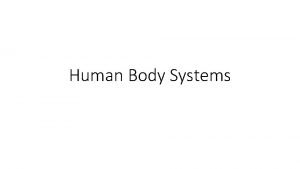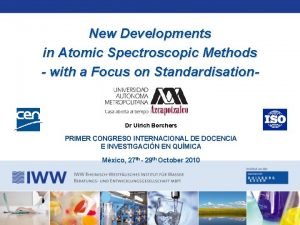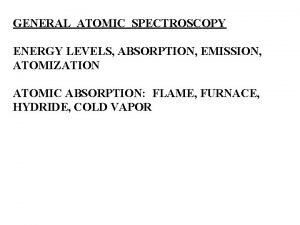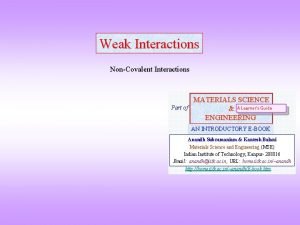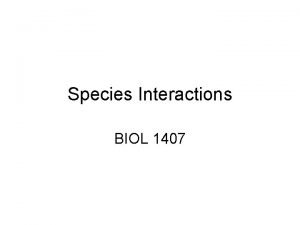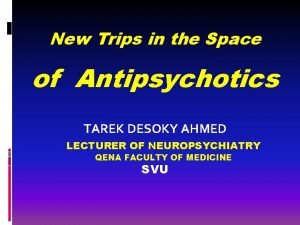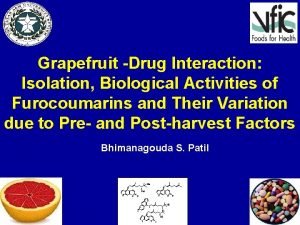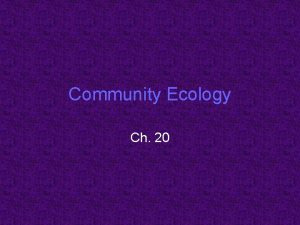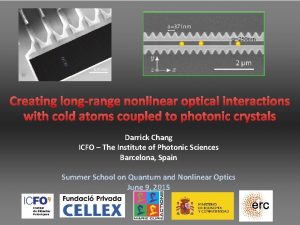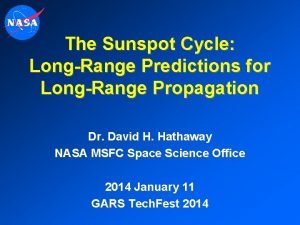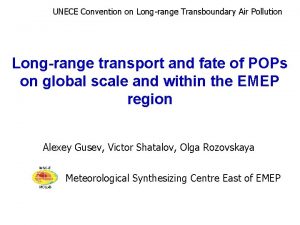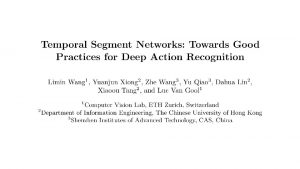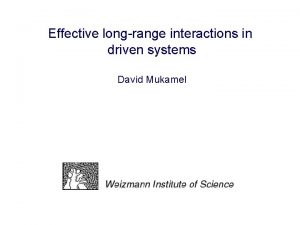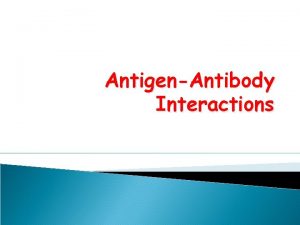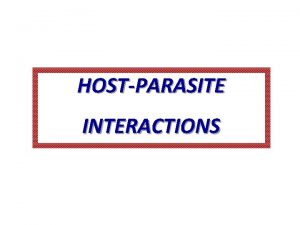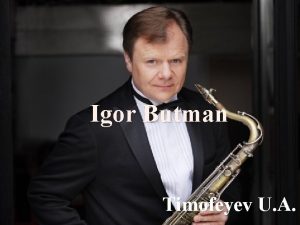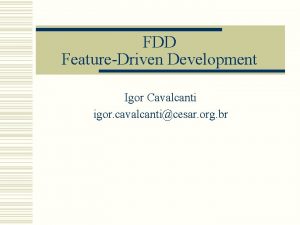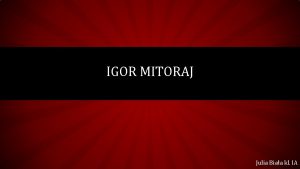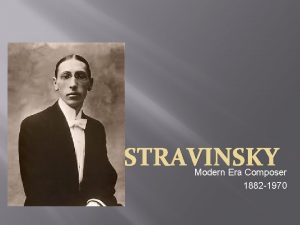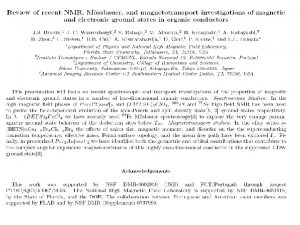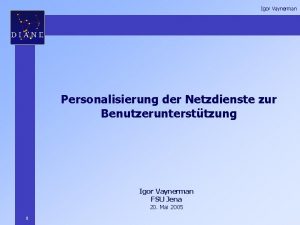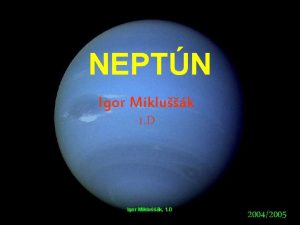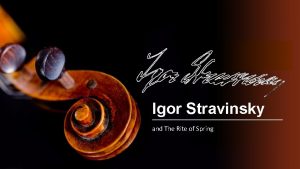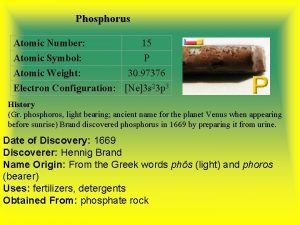Longrange interactions in cold atomic systems Igor Lesanovsky































- Slides: 31

Long-range interactions in cold atomic systems Igor Lesanovsky Trieste 25/07/16 Nature Physics 2, 341 (2006)

Nottingham Postdocs Carlos Espigares Perez Ricardo Gutierrez Alexander Karabanov Zhihao Lan Emanuele Levi Matteo Marcuzzi Jiri Minar Pietro Rotondo Ph. D-students Ben Everest Andreas Kouzelis Katarzyna Macieszcziak Dominic Rose Daniel Wisniewski Local collaborators A. Armour J. P. Garrahan M. Guta W. Köckenberger W. Li B. Olmos

Research at Nottingham Atomic physics and quantum optics excited atoms and ions in fields atom-photon interactions atom interferometry Many-body physics (mainly out of equilibrium) phase transitions in open many-body quantum systems strongly correlated dynamics Hyperpolarisation of nuclear ensembles Open Position

Outline Cold atomic systems - Energy scales and length scales - What does one seek to achieve? Disclaimer Long-range interactions = Long-range interactions in trapped ions interactions that - few-level systems extend over some distance - spin-phonon coupling - effective spin models (see C. Roos‘ talk on Wednesday) Atoms and polar molecules - coupling to the radiation field - long range interactions and dissipation - super- and sub-radiance (see R. Kaiser‘s and R. Bachelard‘s talks) - van-der-Waals vs. dipole-dipole interaction Static dipoles and dressed interactions

Energy scales and length scales Rev. Mod. Phys. 82, 2313 (2010) Trapped ions 5 K Rydberg atoms pol. mol. d-d Ground state atoms Atoms with large magnetic moment Polar molecules Li. Cs KRb Cr Dy Er

What does one seek to achieve? Implementation of quantum computation protocols Quantum simulation of many-body spin systems A. Micheli et al. , Nature Physics 2, 341 (2006)

Quantum simulation of spin systems Polar molecules J=3 Few level approximation J=2 Rotational spectrum (rigid rotor) J=1 J=0 Interactions Local fields, e. g. laser density-density exchange fictitious spin particle

Long-range spin interactions in trapped ion systems

Emergent long-range interactions External dynamics – Phonons Trapped ions 171 Yb+ Goal: create coupling between electrons and phonons to create effective spin-spin interaction AC Stark shift E(x)…electric field of laser Position dependent energy shift:

Emergent long-range interactions Spin-phonon coupling - linear approximation Ions positioned at nodes of standing wave laser field Full Hamiltonian Decoupling between spin and phonon degrees of freedom Displacement operator

Emergent long-range interactions …after the unitary transformation Porras and Cirac, Phys. Rev. Lett. 92, 207901 (2004) - interaction Hamiltonian gets cancelled out - phonons decouple from the spins Effective spin-spin interaction - interaction coefficients Jkn can give rise to long-range interactions - Jkn can be tuned (ferromagnetic, antiferromagnetic, frustrated)

Experiments see also C. Roos’ talk on Wednesday

Long-range interactions through photon exchange --Collective dissipation

Atoms and molecules in free space Lehmberg, Phys. Rev. A 2, 883 (1970) Prototypical example: J=0 J=1 transition J=1 m=-1 m=0 m=1 J=0 single transition with Interaction between atoms and light dipole coupling:

Atoms and molecules in free space J=1 Lehmberg, Phys. Rev. A 2, 883 (1970) m=-1 m=0 m=1 q…wave vector p…polarization J=0 free dynamics ~ electric field coupling constant …we will find that: - interaction with light mediates dipole-dipole interaction - interaction is not only coherent, but also dissipative (collective decay) - figure of merit for interaction strength and dissipation character: (transition wavelength)/(interatomic distance)

Atoms and molecules in free space Goal: obtain effective equation of motion for atoms only Strategy outline: formally solve Heisenberg equation of motion of radiation field then using (Heitler zeta-function) dissipation’ relation between electromagnetic field and atomic operators that is local in time

Interaction vs. dissipation Coherent dynamics Lindblad master equation Hamiltonian “Flip-Flop” interaction Vkl …only resonant contributions V 12/G 0 1/r 3 r 12/l yk(x) = spherical Bessel function of 2 nd kind Interaction strength reduced distance

Interaction vs. dissipation Equation of motion Dissipative dynamics Lindblad master equation Dissipator Photon emission - coupling to mode continuum leads to irreversible decay Decay rate with and jk(x) = spherical Bessel function of 1 st kind

Super and sub-radiance Collective decay - Example: two atoms G 12/G V 12/G interaction Coefficient matrix: - dissipator is brought into diagonal form by introducing collective modes r 12/l Superradiant mode Subradiant modes

Super and sub-radiance Subradiant modes Superradiant modes Phys. Rev. Lett. 110, 143602 (2013) d in unit of 200 nm Subradiant states show up in fluorescence spectrum S(w)

Light scattering off dense atomic gases increasing density talk on Wednesday Single atom decay signal

Light scattering off dense atomic gases data . p x e increasing density Position of atomic resonance line - Conventional meanfield theory predicts lineshift proportional to density - however: lineshift absent in experiment - Shift can be (theoretically) produced by assuming inhomogeneous broadening

Dipole-dipole, van-der-Waals and dressed interactions

van der Waals vs. dipole-dipole - Near field: static dipole-dipole interactions …dipole operator - Interaction between two polar molecules in their ground state J=3 J=2 J=1 J=0 Hamiltonian Dipole operator: Polar molecules

van der Waals vs. dipole-dipole Ground state energy characteristic length scale Dipole-dipole interaction Van-der-Waals interaction

Polar molecules and static dipoles Polar molecule in strong electric field (z-direction) Strong field - hybridises states - energy proportional to field strength - static dipole moment q Field-free states - spherically symmetric - no permanent dipole moment

Dressed interactions - select state with static dipole moment to state without static dipole moment couple them off-resonantly with laser |10> |00>

Dressed interactions Dressed state potential - long-range: 1/r 3 – tail - short-range: flat top length scale: blockade regime dressed regime - interacting level too far off-resonant (even virtual excitation strongly suppressed) dressed atomic state interaction energy

Experimental realisation 133 Cs tomorrow’s subject (see also R. Löw) MW-spectroscopy

Dressed interactions - Outlook - Ensemble of bosons in 2 d form crystals of superfluid droplets at low enough temperature - dressed potentials can be used to engineer many-body interactions

Summary - cold atoms, molecules and ions allow to engineer spin systems - tuneable power-law interactions - exchange interactions - dipole-dipole interactions - van-der-Waals interactions - dressed-state interactions - interactions mediated through photon exchange - collective dissipation super and sub-radiance tomorrow: - interacting atoms in Rydberg states many-body dynamics with competing classical and quantum dynamics in more than statics non-equilibrium phase transitions Rydberg atoms
 Igor lesanovsky
Igor lesanovsky Circulatory system interactions with other systems
Circulatory system interactions with other systems Function of digestive tract
Function of digestive tract Integumentary interactions with other systems
Integumentary interactions with other systems Kassandra munoz
Kassandra munoz Nervous interactions with other systems
Nervous interactions with other systems Relative formula mass of hcl
Relative formula mass of hcl Periodic table tends
Periodic table tends Atomic radius trend in periodic table
Atomic radius trend in periodic table Is atomic mass and relative atomic mass the same
Is atomic mass and relative atomic mass the same Difference between atomic number and atomic mass
Difference between atomic number and atomic mass Atomic number vs atomic radius
Atomic number vs atomic radius Cold vapor atomic fluorescence spectrometry
Cold vapor atomic fluorescence spectrometry Cold vapor atomic fluorescence spectrometry
Cold vapor atomic fluorescence spectrometry Welcome 1 unit 10 lesson 1
Welcome 1 unit 10 lesson 1 Disadvantages of direct system of cold water supply
Disadvantages of direct system of cold water supply Noncovalent interactions
Noncovalent interactions Congress formal and informal powers
Congress formal and informal powers Competition symbiotic relationship
Competition symbiotic relationship Wikimedia
Wikimedia Qualitative and quantitative research
Qualitative and quantitative research Sertraline interactions
Sertraline interactions Unit 5 macroeconomics lesson 2 activity 45
Unit 5 macroeconomics lesson 2 activity 45 The properties and interactions of magnets
The properties and interactions of magnets Felodapine
Felodapine Interactions within ecosystems grade 7
Interactions within ecosystems grade 7 Abiotic factors
Abiotic factors Humans built a dam out of rock materials
Humans built a dam out of rock materials Section 20-1 review species interactions
Section 20-1 review species interactions Cellular respiration flocabulary read and respond answers
Cellular respiration flocabulary read and respond answers 6.1 habitats niches and species interactions
6.1 habitats niches and species interactions Ppi drug interactions
Ppi drug interactions
